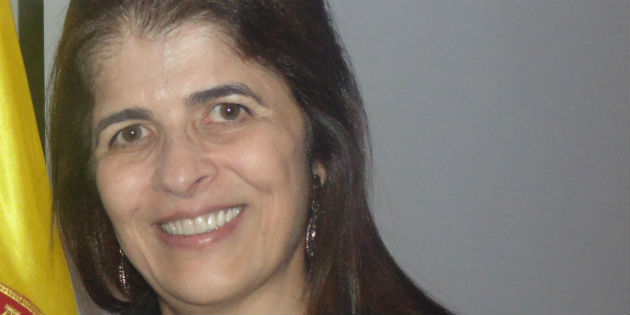Katia Alvarenga, Brazil: cochlear implant lessons learned
Katia Alvarenga is the current president of the Brazilian Academy of Audiology (ABA) and one of the leading professionals in her country in the cochlear implant (CI) field. This confident and very charismatic speech-language specialist has accepted to tell us more about Brazil's experience with CI.

What began in 1990 has clearly been a long journey, but there is still much to do and many lessons have been learned. The Brazilian government first decided to back cochlear implants with adult application, followed two years later with their use in children. Finally, in 1999, funding cover was approved for elderly adults. Not all were covered by the health system, however: “Adolescents and adults with congenital hearing loss could only receive implants if they had oral language; in cases communicating with sign language, no benefit was given since the results obtained with CI would be inferior and not very positive. The good news, which shows a positive evolution for CI in Brazil, is that in December, 2015 the Health Ministry issued a decree under which osseointegrated prostheses, unilateral and bilateral cochlear implants would, within certain regulatory limits be financed for all ages. Besides the implant itself, this includes follow-up and hearing therapy under Brazil’s Unified Health System (SUS).”
This situation was made possible thanks to in-depth, combined work between the government, state universities, and scientific associations, which together have established an evidence-based policy for improving treatment standards for persons with hearing disability in Brazil. This expert would recommend this process for all countries currently designing and implementing programmes of this type.
In relation to this, Dr. Katia Alvarenga proposes the use of an ongoing information system. “In our cochlear implant programme, we run a control of how many operations have been carried out, as well as follow-up on each patient for cost-benefit analysis; the same does not occur, however, for the hearing apparatus itself, so we do not have the same control, and for this reason I am recommending an information system that from the start has key data and patient mapping, since this is the only way the government can keep investing in this policy which has such a high cost due to the great quantity of electronic devices involved.”
Alvarenga, who also works as a researcher at the University of Sao Paulo Clinics Hospital, underlines rehabilitation as another fundamental target for investment, since “it is not the cochlear implant alone that brings the benefits we hope for, not even in small children, as speech-language therapy must be considered by specialists or the implant will not be successful.”
In Brazil, there are around 4,500 people with cochlear implants, while 25 official health system medical services carry out the procedure. The problem they face is that “distribution is not standardised, so in the north region we have just one programme, four in the south, another few in the north-east, and the greatest number in the south-east, the area of Sao Paulo, Rio de Janeiro, and Minas Gerais,” points out the president of the association.
Challenges and concerns
The biggest challenge now facing the country in terms of treatment and cover is related to maintenance of the implant, and the debate within the health service is focused on who should pay for this maintenance. The buck, as they say, is passed between the government and patients, although Brazil operates a state health system for which the country’s constitution dictates that users should pay nothing on top of their tax contributions. “Maintenance is a hard fact because processors need to be changed, batteries die, cables break…and this is a problem that was foreseen and for which an association was formed by families and friends of the hearing disabled in order to gain greater purchasing power for those with lower means through a monthly contribution towards CI maintenance. In the state of Sao Paulo we have a different situation, since through legal action all government CI programmes include the bilateral implant and its maintenance. This is not, however, the case all over Brazil, and this is one of our concerns,” said the specialist.
Finally, on the subject of hearing research trends, Katia Alvarenga told Audio Infos that while Brazil is at the forefront with many studies, there is a current focus on analysis of the benefits of sequential bilateral cochlear implants (a second cochlear implant for patients who, years earlier, received a first implant). While the benefits of binaurality in patients receiving two implants simultaneously is not in doubt, the current question is focused on how long it takes for unilateral patients receiving a later second implant to receive the benefit of sound in both ears. “In my country, the debate is being conducted through electrophysiological research of cortical activity, and we are studying sequential implants, their cost-benefit and procedure, and we are even thinking ahead to state policies,” concluded the researcher.
Visit Audiology Infos Brazil for the latest audiology news from Brazil.



